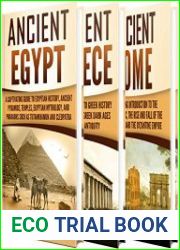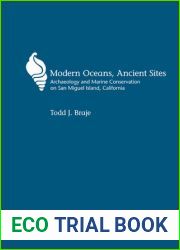
BOOKS - HISTORY - The Archaeology of Urbanism in Ancient Egypt From the Predynastic P...

The Archaeology of Urbanism in Ancient Egypt From the Predynastic Period to the End of the Middle Kingdom
Author: Nadine Moeller
Year: 2016
Pages: 449
Format: PDF
File size: 67 MB
Language: ENG

Year: 2016
Pages: 449
Format: PDF
File size: 67 MB
Language: ENG

The Archaeology of Urbanism in Ancient Egypt From the Predynastic Period to the End of the Middle Kingdom In this groundbreaking book, Nadine Moeller challenges the prevailing views on Egypt's non-urban past and presents a compelling argument for Egypt as an early urban society. Through a comprehensive synthesis of archaeological data, she traces the emergence of urban features from the Predynastic Period to the disintegration of the powerful Middle Kingdom state (ca. 3500-1650 BC). By comparing periods of strong political control with those of decentralization, Moeller sheds light on the different facets of urbanism in ancient Egypt and provides a nuanced understanding of how society functioned and evolved over time. The book begins by examining the changing settlement patterns in ancient Egypt, highlighting the significance of urban development during the Predynastic Period. Moeller demonstrates that urban features were not merely the result of agricultural surpluses or environmental factors, but rather a deliberate choice made by ancient Egyptians to organize their societies in a particular way. She shows that these early urban centers were characterized by dense populations, complex social hierarchies, and specialized labor, which laid the foundation for the development of complex society. Moeller then explores the evolution of urbanism during the Old Kingdom (2686-2181 BC), when the state played a crucial role in the growth and organization of cities.
The Archaeology of Urbanism in Ancient Egypt From the Predynastic Period to the End of the Middle Kingdom В этой новаторской книге Надин Мёллер бросает вызов преобладающим взглядам на негородское прошлое Египта и представляет собой убедительный аргумент в пользу Египта как раннего городского общества. Благодаря всестороннему синтезу археологических данных она прослеживает возникновение городских черт от Прединастического периода до распада могущественного государства Среднего царства (ок. 3500 - 1650 гг. Сравнивая периоды сильного политического контроля с периодами децентрализации, Мёллер проливает свет на различные аспекты урбанизма в Древнем Египте и даёт тонкое понимание того, как общество функционировало и развивалось с течением времени. Книга начинается с изучения изменения моделей поселений в Древнем Египте, подчеркивая значение городского развития в Прединастический период. Мёллер демонстрирует, что городские черты были не просто результатом сельскохозяйственных излишков или факторов окружающей среды, а скорее преднамеренным выбором, сделанным древними египтянами, чтобы организовать свои общества определенным образом. Она показывает, что для этих ранних городских центров были характерны плотное население, сложные социальные иерархии, специализированный труд, положивший начало развитию сложного общества. Затем Мёллер исследует эволюцию урбанизма в период Древнего царства (2686 - 2181 годы до н. э.), когда государство играло решающую роль в росте и организации городов.
The Archaeology of Urbanism in Ancient Egypt From the Predynastic Period to the End of the Middle Kingdom Dans ce livre novateur, Nadine Möller récuse les points de vue dominants sur le passé non urbain de l'Égypte et présente un argument convaincant en faveur de l'Égypte en tant que société urbaine primitive. Grâce à une synthèse complète des données archéologiques, elle montre l'émergence des caractéristiques urbaines de la période préinastique à la désintégration du puissant État du Royaume Moyen (environ 3500-1650). En comparant les périodes de contrôle politique fort avec les périodes de décentralisation, Möller met en lumière différents aspects de l'urbanisme dans l'Egypte antique et donne une compréhension fine de la façon dont la société a fonctionné et évolué au fil du temps. livre commence par étudier l'évolution des modèles de peuplement en Egypte antique, soulignant l'importance du développement urbain à la période préinastique. Möller démontre que les caractéristiques urbaines n'étaient pas seulement le résultat de surplus agricoles ou de facteurs environnementaux, mais plutôt le choix délibéré des anciens égyptiens d'organiser leurs sociétés d'une certaine manière. Il montre que ces premiers centres urbains étaient caractérisés par une population dense, des hiérarchies sociales complexes, un travail spécialisé qui a lancé le développement d'une société complexe. Möller étudie ensuite l'évolution de l'urbanisme au cours de l'Ancien Royaume (2686-2181 avant JC). e.), lorsque l'État a joué un rôle crucial dans la croissance et l'organisation des villes.
The Archaeology of Urbanism in Ancient Egypt From the Predynastic Period to the End of the Middle Kingdom En este libro pionero, Nadine Möller desafía las opiniones predominantes sobre el pasado no urbano Egipto y representa un argumento convincente a favor de Egipto como una sociedad urbana temprana. Mediante una síntesis completa de la evidencia arqueológica, traza el surgimiento de los rasgos urbanos desde el período predinástico hasta la desintegración del poderoso estado del Reino Medio (aprox. 3500-1650. Comparando los períodos de fuerte control político con los períodos de descentralización, Möller arroja luz sobre diversos aspectos del urbanismo en el antiguo Egipto y da una sutil comprensión de cómo la sociedad funcionó y se desarrolló con el tiempo. libro comienza estudiando el cambio de modelos de asentamientos en el Antiguo Egipto, destacando la importancia del desarrollo urbano durante el período predinástico. Möller demuestra que los rasgos urbanos no eran simplemente el resultado de excedentes agrícolas o factores ambientales, sino más bien una elección deliberada hecha por los antiguos egipcios para organizar sus sociedades de cierta manera. Muestra que estos primeros centros urbanos se caracterizaron por una población densa, complejas jerarquías sociales, un trabajo especializado que marcó el inicio del desarrollo de una sociedad compleja. Möller entonces explora la evolución del urbanismo durante el período del Reino Antiguo (2686-2181 a. e.), cuando el Estado desempeñaba un papel decisivo en el crecimiento y la organización de las ciudades.
The Archaeology of Urbanism in Ancient Egypt From the Prevynastic Period to the End of the Middle Kingdom Neste livro inovador, Nadine Möeller desafia as opiniões predominantes sobre o passado não urbano do Egito e representa um argumento convincente para o Egito Como uma sociedade da cidade. Através de uma síntese completa de dados arqueológicos, ela traça o surgimento de traços urbanos desde o Período Pré-Inástico até a desintegração do poderoso Estado do Reino do Meio (C. 3500-1650) Comparando os períodos de forte controle político com os períodos de descentralização, Möeller lança luz sobre vários aspectos do urbanismo no Egito Antigo e dá uma compreensão sutil de como a sociedade funcionou se desenvolveu ao longo do tempo. O livro começa com um estudo sobre a mudança dos modelos de colonatos no Egito antigo, enfatizando a importância do desenvolvimento urbano durante o período pré-inástico. Möeller demonstra que os traços urbanos não eram apenas resultado de excessos agrícolas ou fatores ambientais, mas sim uma escolha deliberada feita pelos antigos egípcios para organizar suas sociedades de certa forma. Ela mostra que estes centros urbanos iniciais eram caracterizados por populações densas, hierarquias sociais complexas, trabalho especializado que iniciou o desenvolvimento de uma sociedade complexa. Depois, Möeller investigou a evolução do urbanismo durante o Reino Antigo (2686-2181). C.) quando o Estado desempenhava um papel crucial no crescimento e na organização das cidades.
The Archaeology of Urbanism in Ancient Egypt From the Predinastic Period to the End of the Middle Kingdom In questo libro innovativo, Nadine Möller sfida le opinioni prevalenti sul passato dell'Egitto non urbano ed è un argomento convincente a favore dell'Egitto Come una società cittadina precoce. Grazie a una sintesi completa di dati archeologici, essa rileva l'insorgenza di tratti urbani dal Periodo Preinastico alla disintegrazione del potente Stato del Regno di Mezzo (tra il 3500 e il 1650) Confrontando i periodi di forte controllo politico con i periodi di decentralizzazione, Möller mette in luce diversi aspetti dell'urbanismo nell'antico Egitto e fornisce una delicata comprensione di come la società abbia funzionato e evoluto nel tempo. Il libro inizia studiando il cambiamento dei modelli degli insediamenti nell'antico Egitto, sottolineando l'importanza dello sviluppo urbano durante il periodo preinastico. Möller dimostra che i tratti urbani non erano solo il risultato di eccessi agricoli o fattori ambientali, ma piuttosto una scelta deliberata fatta dagli antichi egiziani per organizzare le loro società in un certo modo. Mostra che questi primi centri urbani erano caratterizzati da una popolazione densa, da una complessa gerarchia sociale, da un lavoro specializzato che ha dato il via allo sviluppo di una società complessa. Möller esplora poi l'evoluzione dell'urbanismo durante il regno antico (2686-2181). C.) quando lo Stato giocava un ruolo cruciale nella crescita e nell'organizzazione delle città.
Die Archäologie des Urbanismus im alten Ägypten Von der prädynastischen Zeit bis zum Ende des Mittleren Königreichs Nadine Möller stellt in diesem wegweisenden Buch die vorherrschenden Ansichten über Ägyptens nicht-urbane Vergangenheit in Frage und liefert ein überzeugendes Argument für Ägypten als frühe Stadtgesellschaft. Durch eine umfassende Synthese archäologischer Daten zeichnet sie die Entstehung urbaner Züge von der Prädynastischen Zeit bis zum Zusammenbruch des mächtigen Staates des Mittleren Reiches nach (ca. 3500 - 1650. Vergleicht man Perioden starker politischer Kontrolle mit Perioden der Dezentralisierung, beleuchtet Möller verschiedene Aspekte des Urbanismus im alten Ägypten und gibt einen subtilen Einblick, wie die Gesellschaft im Laufe der Zeit funktionierte und sich entwickelte. Das Buch beginnt mit der Untersuchung der Veränderung der edlungsmuster im alten Ägypten und betont die Bedeutung der Stadtentwicklung in der Prädynastischen Zeit. Moeller zeigt, dass städtische Merkmale nicht nur das Ergebnis landwirtschaftlicher Überschüsse oder Umweltfaktoren waren, sondern vielmehr eine bewusste Entscheidung der alten Ägypter, ihre Gesellschaften in einer bestimmten Weise zu organisieren. e zeigt, dass diese frühen urbanen Zentren durch eine dichte Bevölkerung, komplexe soziale Hierarchien und spezialisierte Arbeit gekennzeichnet waren, die die Entwicklung einer komplexen Gesellschaft einleiteten. Moeller untersucht dann die Entwicklung des Urbanismus in der Zeit des Alten Reiches (2686-2181 v. Chr. e.), als der Staat eine entscheidende Rolle beim Wachstum und der Organisation der Städte spielte.
Archeologia urbanizmu w starożytnym Egipcie Od okresu predynastycznego do końca średniego królestwa W tej przełomowej książce Nadine Moeller stawia wyzwania przeważającym poglądom na egipską przeszłość i przedstawia przekonujący argument dla Egiptu jako wczesnego miasta społeczeństwo. Dzięki kompleksowej syntezie danych archeologicznych, śledzi pojawienie się cech miejskich od okresu predynastycznego do upadku potężnego stanu Królestwa Środkowego (ok. 3500-1650). Porównując okresy silnej kontroli politycznej z okresami decentralizacji, Möller rzuca światło na różne aspekty urbanizmu w starożytnym Egipcie i daje subtelne zrozumienie, jak społeczeństwo funkcjonowało i rozwijało się w czasie. Książka rozpoczyna się badaniem zmieniających się wzorców osadnictwa w starożytnym Egipcie, podkreślając znaczenie rozwoju miejskiego w okresie predynastycznym. Möller pokazuje, że cechy miejskie nie były po prostu wynikiem nadwyżek rolnych lub czynników środowiskowych, ale raczej świadomych wyborów dokonanych przez starożytnych Egipcjan w celu zorganizowania ich społeczeństw w szczególny sposób. Pokazuje, że te wczesne ośrodki miejskie charakteryzowały się gęstą populacją, złożonymi hierarchiami społecznymi, wyspecjalizowaną pracą, która stanowiła fundament dla rozwoju złożonego społeczeństwa. Następnie Möller bada ewolucję urbanizmu w Starym Królestwie (2686-2181 pne. e.), kiedy państwo odgrywało decydującą rolę w rozwoju i organizacji miast.
הארכיאולוגיה של האורבניזם במצרים העתיקה מהתקופה הפרדינסטית ועד סוף הממלכה התיכונה בספר פורץ דרך זה, נאדין מולר מאתגרת השקפות על העבר הלא-אורבני של מצרים ומציגה טיעון משכנע עבור מצרים כחברה עירונית מוקדמת. הודות לסינתזה מקיפה של נתונים ארכאולוגיים, היא עוקבת אחר הופעת המאפיינים העירוניים מהתקופה הפרדינסטית ועד לקריסת המדינה החזקה של הממלכה התיכונה (3500-1650 לערך). משווה תקופות של שליטה פוליטית חזקה עם תקופות של ביזור, מולר שופך אור על היבטים שונים של האורבניזם במצרים העתיקה ונותן הבנה מעודנת כיצד החברה תפקדה והתפתחה עם הזמן. הספר מתחיל בבדיקת דפוסי ההתיישבות המשתנים במצרים העתיקה, ומדגיש את חשיבות ההתפתחות העירונית בתקופה הפרדינסטית. מולר מדגים כי מאפיינים עירוניים לא היו רק תוצאה של עודפים חקלאיים או גורמים סביבתיים, אלא בחירות מכוונות שנעשו על ידי מצרים העתיקה כדי לארגן את החברות שלהם באופן מסוים. היא מראה שמרכזים עירוניים מוקדמים אלה התאפיינו באוכלוסיות צפופות, היררכיות חברתיות מורכבות, עבודה מיוחדת, שהניחו את היסודות להתפתחות חברה מורכבת. לאחר מכן מולר חוקר את התפתחות האורבניזם בתקופת הממלכה הישנה (2686-2181 לפנה "ס). ) כאשר המדינה מילאה תפקיד מכריע בצמיחה ובארגון של ערים.''
The Archaeology of Urbanism in Ancient Egypt From the Predynastic Period to the End of the Middle Kingdom Bu çığır açan kitapta Nadine Moeller, Mısır'ın kentsel olmayan geçmişine dair hakim görüşlere meydan okuyor ve erken bir kentsel toplum olarak Mısır için zorlayıcı bir argüman sunuyor. Arkeolojik verilerin kapsamlı bir sentezi sayesinde, Predynastic döneminden Orta Krallık'ın güçlü devletinin çöküşüne (yaklaşık 3500-1650) kadar kentsel özelliklerin ortaya çıkışını izler. Güçlü siyasi kontrol dönemlerini ademi merkeziyet dönemleriyle karşılaştıran Möller, Eski Mısır'daki şehirciliğin çeşitli yönlerine ışık tutuyor ve toplumun zaman içinde nasıl işlediğine ve geliştiğine dair ince bir anlayış sunuyor. Kitap, eski Mısır'daki değişen yerleşim modellerini inceleyerek, Predynastic döneminde kentsel gelişimin önemini vurgulayarak başlıyor. Möller, kentsel özelliklerin sadece tarımsal fazlalıkların veya çevresel faktörlerin sonucu değil, eski Mısırlıların toplumlarını belirli bir şekilde organize etmek için yaptıkları kasıtlı seçimler olduğunu göstermektedir. Bu erken kent merkezlerinin, karmaşık bir toplumun gelişiminin temelini atan yoğun nüfuslar, karmaşık sosyal hiyerarşiler, uzmanlaşmış emek ile karakterize edildiğini gösteriyor. Sonra Möller, Eski Krallık döneminde (MÖ 2686-2181) şehirciliğin evrimini araştırıyor. e.), devletin şehirlerin büyümesinde ve örgütlenmesinde belirleyici bir rol oynadığı zaman.
The Archaeology of Urbanism in Ancient Egypt From the Premynastic to the End of the Middle Kingdom في هذا الكتاب الرائد، تتحدى نادين مولر الآراء السائدة حول ماضي مصر غير الحضري وتقدم حجة مقنعة لمصر مصر كمجتمع حضري مبكر. بفضل التوليف الشامل للبيانات الأثرية، تتتبع ظهور السمات الحضرية من فترة ما قبل النساء إلى انهيار الدولة القوية في المملكة الوسطى (حوالي 3500-1650. بمقارنة فترات السيطرة السياسية القوية بفترات اللامركزية، يلقي مولر الضوء على جوانب مختلفة من التمدن في مصر القديمة ويعطي فهمًا دقيقًا لكيفية عمل المجتمع وتطوره بمرور الوقت. يبدأ الكتاب بدراسة الأنماط المتغيرة للاستيطان في مصر القديمة، مع التأكيد على أهمية التنمية الحضرية في العصر ما قبل النسائي. يوضح مولر أن السمات الحضرية لم تكن مجرد نتيجة الفوائض الزراعية أو العوامل البيئية، بل كانت خيارات متعمدة اتخذها المصريون القدماء لتنظيم مجتمعاتهم بطريقة معينة. تظهر أن هذه المراكز الحضرية المبكرة كانت تتميز بكثافة سكانية، وتسلسلات اجتماعية معقدة، وعمالة متخصصة، مما وضع الأساس لتنمية مجتمع معقد. ثم يستكشف مولر تطور التمدن خلال الدولة القديمة (2686-2181 قبل الميلاد. (هـ)، عندما لعبت الدولة دورا حاسما في نمو المدن وتنظيمها.
古代エジプトにおける都市主義の考古学Predynastic時代から中世の終わりまでこの画期的な本では、ナディーン・モーラーはエジプトの非都市の過去の一般的な見解に挑戦し、初期の都市社会としてのエジプトのための説得力のある議論を提示します。考古学的データの包括的な合成のおかげで、彼女はPredynastic時代から中王国の強力な状態の崩壊までの都市の特徴の出現を追跡します(C。 3500-1650。強い政治的支配の時代と地方分権の時代を比較して、メーラーは古代エジプトの都市主義の様々な側面に光を当て、社会がどのように機能し、時間をかけて発展したかを微妙に理解しています。この本は、古代エジプトにおける定住の変化のパターンを調べ、プレディナスティック時代における都市開発の重要性を強調することから始まる。メーラーは、都市の特徴は単に農業の余剰や環境要因の結果ではなく、古代エジプト人が特定の方法で社会を組織するために意図的に選択したものであることを示している。彼女は、これらの初期の都市センターは、複雑な人口、複雑な社会階層、専門的な労働によって特徴付けられ、複雑な社会の発展の基礎を築いたことを示している。その後、メーラーは旧王国時代(紀元前2686-2181)の都市主義の進化を探求する。e。)、国家が都市の成長と組織に決定的な役割を果たしたとき。
古埃及古代城市主義考古學從祖先時代到中王國盡頭納丁·莫勒(NadineMöller)在這本開創性的書中挑戰了對埃及非城市歷史的普遍看法,並提出了令人信服的論點埃及是早期的城市社會。通過考古證據的全面綜合,她追溯了從王朝前時期到強大的中王國國家解體(約3500-1650)的城市特征的出現。通過將強大的政治控制時期與權力下放時期進行比較,Möller揭示了古埃及城市主義的各個方面,並深入了解了社會如何隨著時間的推移而運作和發展。該書首先研究了古埃及定居模式的變化,強調了工業前時期城市發展的重要性。莫勒(Möller)證明,城市特征不僅是農業盈余或環境因素的結果,而且是古埃及人故意以某種方式組織其社會的選擇。它表明,這些早期的城市中心的特征是人口密集,社會等級制度復雜,專業勞動為復雜社會的發展奠定了基礎。然後,莫勒研究了古代王國時期(公元前2686至2181)城市主義的演變。e.)當國家在城市發展和組織中發揮關鍵作用時。







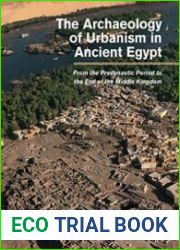


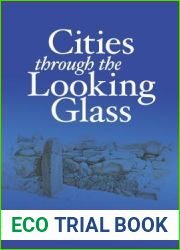

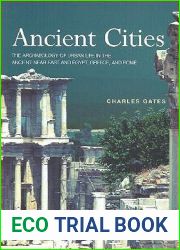

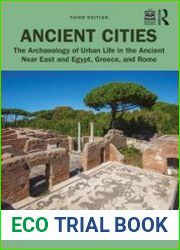
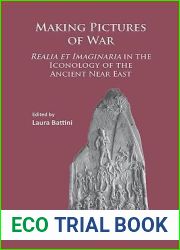

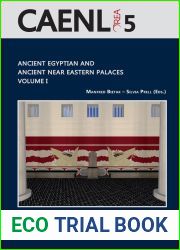
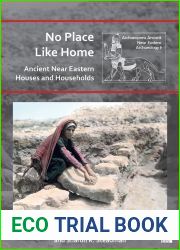
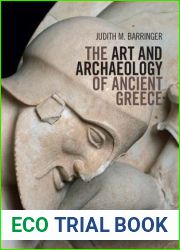
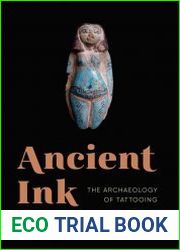
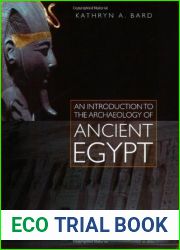
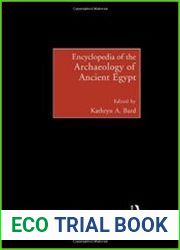
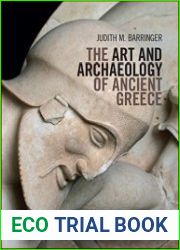
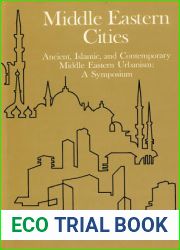
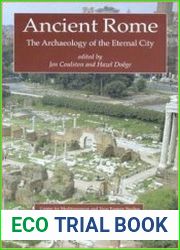

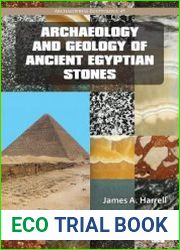
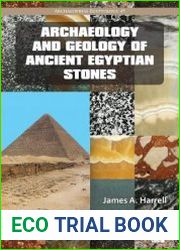
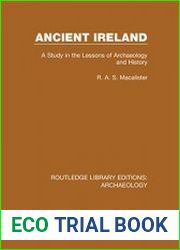
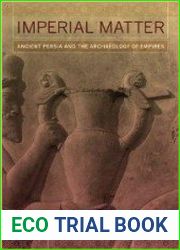

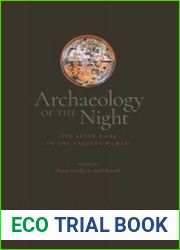
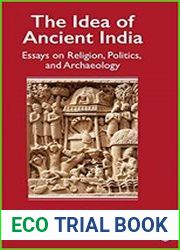
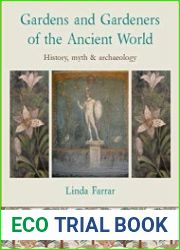
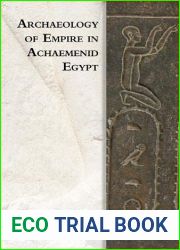
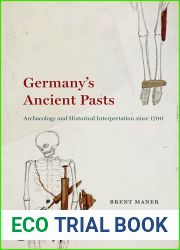
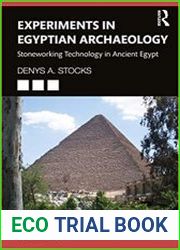
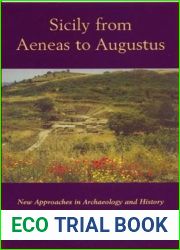
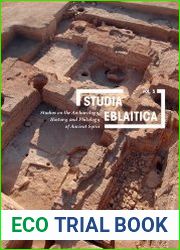
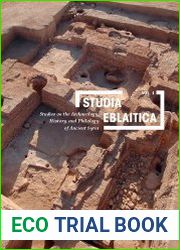
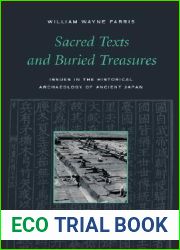
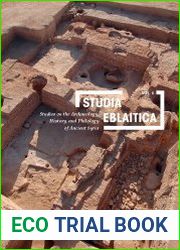

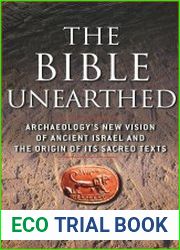
![Ancient Maya Women (Gender and Archaeology) [Paperback] [2002] (Author) Traci Ardren Ancient Maya Women (Gender and Archaeology) [Paperback] [2002] (Author) Traci Ardren](https://myecobook.life/img/8/881563_oc.jpg)

